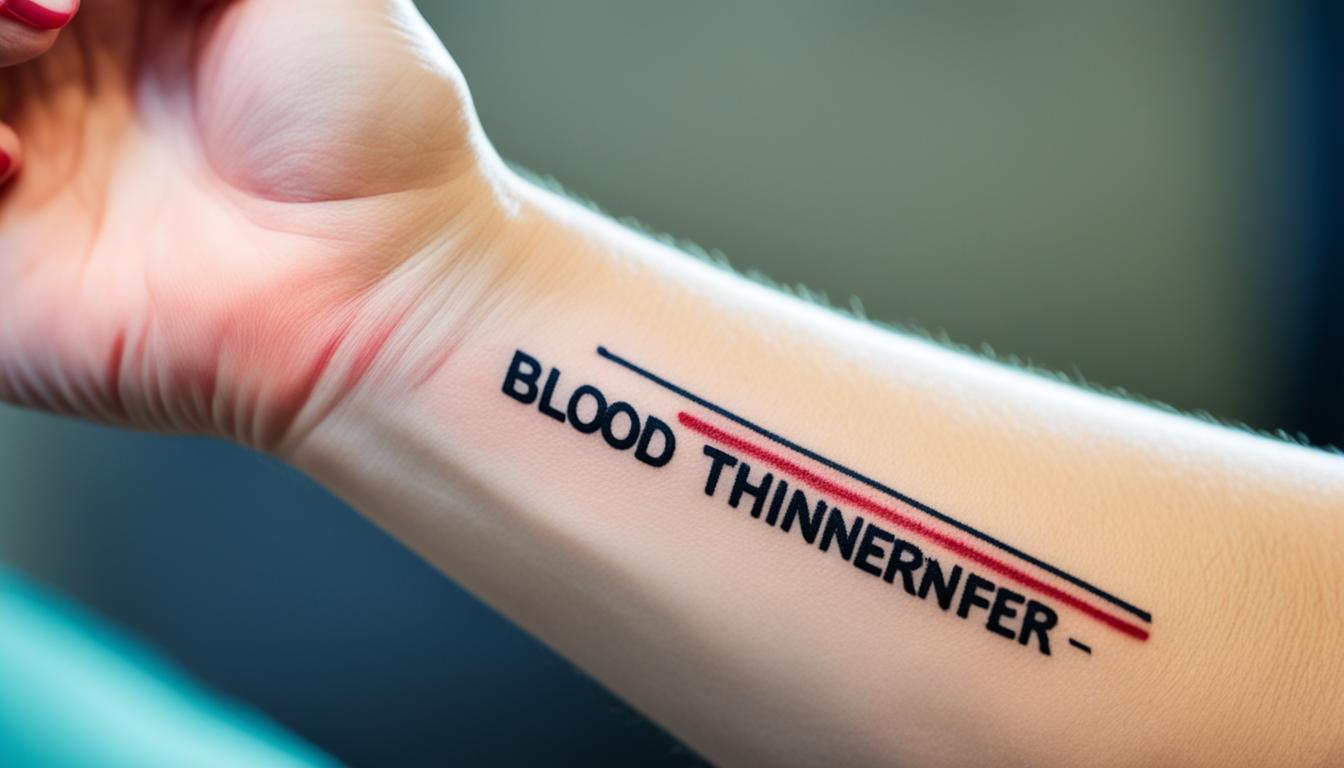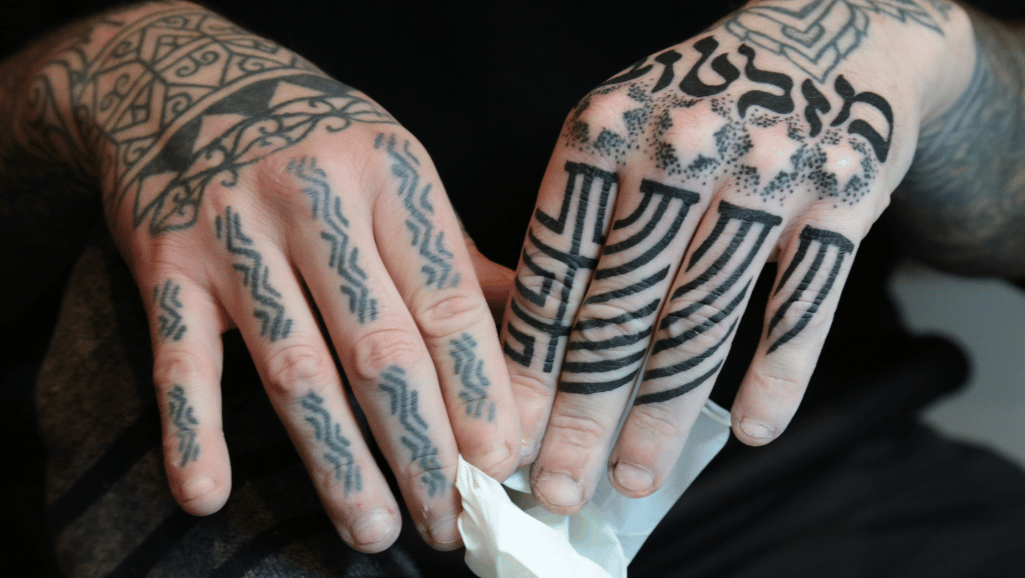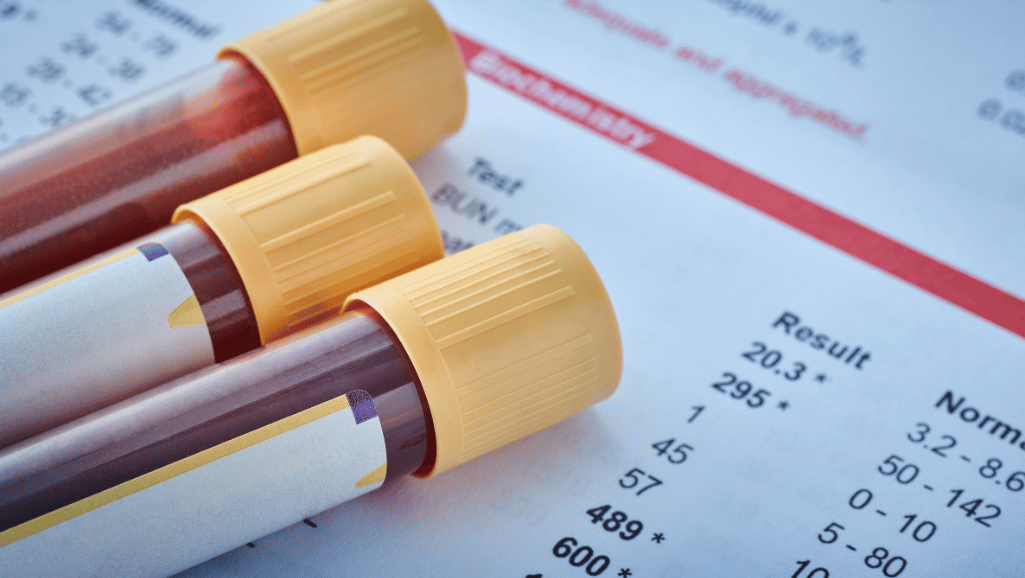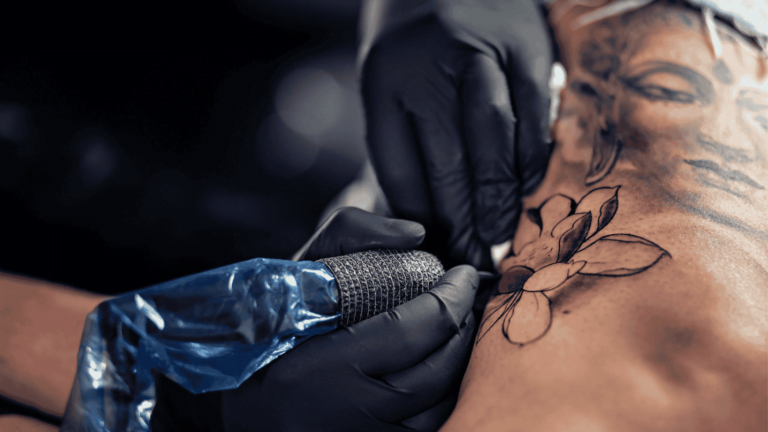When considering getting a tattoo while taking blood thinners, there are important factors to consider. While tattoos bleeding during the process is normal, taking blood thinners can cause excessive bleeding and impact the healing process. Additionally, blood thinners can affect the visibility for the tattoo artist and hinder the skin’s clotting capabilities, leading to a higher risk of infection. It is important to consult with a doctor and discuss any potential risks before proceeding with a tattoo while on blood thinners.
Key Takeaways:
- Getting a tattoos on blood thinners can lead to excessive bleeding and hinder the healing process. Consult with a doctor to understand the risks involved.
- Visibility challenges for tattoo artists may arise as blood thinners can affect the artist’s ability to see the tattoo clearly.
- Blood thinners can impede the skin’s clotting abilities, leading to a higher risk of infection. Proper aftercare and hygiene measures should be followed to prevent infections.
- Getting a tattoo while on blood thinners may result in longer sessions and potentially higher costs due to the need for extra precautions and supplies.
- Tattoo artists often have regulations regarding tattooing individuals on blood thinners. Discuss your situation with the artist beforehand.
Potential Problems of Getting a Tattoos on Blood Thinners
When taking blood thinners before getting a tattoo, it’s important to be aware of potential problems and complications that may arise. The blood thinning effects of these medications can lead to various challenges throughout the tattooing process, including excessive and prolonged bleeding. These issues can pose health risks and create difficulties for both the tattoo artist and the person getting the tattoo.
One of the primary problems of getting a tattoos on blood thinners is the increased risk of excessive bleeding. Blood thinners reduce the blood’s ability to clot, which means that any puncturing of the skin during the tattooing process can result in prolonged bleeding. This can lead to health risks from excessive blood loss and may require additional medical attention or interventions.
In addition to the health risks, the excessive bleeding caused by blood thinners can also make it challenging for the tattoo artist to maintain visibility. The constant presence of blood can obstruct the artist’s view, making it difficult to accurately tattoo the desired design. This can negatively impact the quality and success of the tattooing process.
Furthermore, the clotting capabilities of the tattooed skin may be compromised due to the presence of blood thinners. Clotting is an essential part of the healing process, as it helps to seal the tattooed skin and prevent infection. However, blood thinners can hinder the skin’s ability to form clots effectively, leading to delayed healing and potentially increasing the risk of infection.
It’s also worth noting that getting a tattoo on blood thinners can result in more expensive tattoo sessions. The increased bleeding may require the tattoo artist to take additional precautions and spend more time managing the excess blood. This can lead to longer sessions and, in some cases, the need for extra supplies and resources to maintain hygiene and safety. As a result, the overall cost of getting a tattoo while on blood thinners may be higher compared to getting one without the presence of these medications.
Overall, understanding and considering these potential problems and complications is essential before deciding to get a tattoo while on blood thinners. It’s crucial to consult with a healthcare professional and the tattoo artist to assess the risks, discuss potential preventive measures, and make an informed decision that prioritizes both health and desired body art.
Potential Problems of Getting a Tattoo on Blood Thinners
| Problem | Impact |
|---|---|
| Excessive and prolonged bleeding | Potential health risks, longer healing time |
| Visibility challenges for the tattoo artist | Possible inaccurate tattooing, lower tattoo quality |
| Poor clotting capabilities of the tattooed skin | Delayed healing, increased infection risk |
| Higher costs | Extended tattoo sessions, additional supplies |
Visibility Challenges for Tattoo Artists
When a person is taking blood thinners, the increased rate of bleeding can impact the visibility for the tattoo artist. The artist needs to frequently wipe the area being worked on to remove excess ink and blood, which can make it more difficult to see the stencil and affect the outcome of the tattoo’s appearance.
This decreased visibility can pose challenges for the artist in creating precise lines and intricate details. It may require additional time and effort to ensure the tattoo is executed with precision.
In order to mitigate these challenges, tattoo artists often employ various techniques. They may use additional lighting, magnification tools, or ask the client to pause taking blood thinners before the tattooing session to ensure better visibility.
Furthermore, the increased bleeding may require the artist to adapt their tattooing approach. They may need to work in smaller sections, constantly cleaning the area to maintain visibility and avoid any unintended blending of colors due to excessive bleeding.
It is important for both the artist and the person getting the tattoo to be aware of these visibility challenges in order to manage expectations and ensure the best possible outcome.
| Visibility Challenges for Tattoo Artists | Implications |
|---|---|
| Limited visibility of the stencil | Can affect the accuracy and details of the tattoo |
| Difficulty in creating precise lines | May result in less defined tattoo design |
| Adaptation of tattooing approach | Working in smaller sections, frequent cleaning |
| Potential prolonged tattooing session | Due to the need for increased cleaning and adjustments |
Despite these challenges, skilled and experienced tattoo artists can still produce high-quality tattoos even when working with clients on blood thinners. Open communication with the artist about any medical conditions or medications is important to ensure they can make the necessary adjustments and provide the best possible tattooing experience.
Clotting Challenges and Healing Time
Taking blood thinners, such as aspirin, can affect the body’s natural clotting abilities, which can have implications for the healing process of a tattoo. When a person takes blood thinners, it can hinder the skin’s ability to clot effectively, resulting in prolonged bleeding after getting a tattoo.
This means that the tattooed skin may continue to bleed for a longer period of time compared to a normal tattoo. Additionally, the healing time for a tattoo on blood thinners can be prolonged due to the delayed clotting process. It is crucial to understand and manage these clotting challenges in order to ensure proper healing and reduce the risk of complications.
While prolonged bleeding and delayed healing time may be a concern, it is important to note that everyone’s body and response to blood thinners may differ. Some individuals may experience more significant clotting challenges than others, depending on their specific medical condition, dosage of blood thinners, and other factors. It is essential to consult with a medical professional to assess your unique situation and receive appropriate guidance.
Precautions and Tips for Tattoo Healing Time on Blood Thinners
Here are some precautions and tips to help manage the healing process and minimize potential complications when getting a tattoo while on blood thinners:
- Inform your tattoo artist about your use of blood thinners before the tattooing process begins. This allows them to take extra precautions and adjustments to their technique to ensure your safety.
- Follow the aftercare instructions provided by your tattoo artist diligently. This includes keeping the tattoo clean, avoiding exposure to excessive moisture, and applying recommended ointments or creams to aid in the healing process.
- Avoid activities or habits that may put unnecessary strain on the tattooed area, such as excessive stretching, exposure to direct sunlight, or swimming in pools or hot tubs.
- Monitor the tattooed area closely for signs of infection, such as excessive redness, swelling, or discharge. If you notice any concerning symptoms, seek medical attention promptly.
- Stay in regular contact with your healthcare provider to discuss your progress and any concerns that may arise during the healing process.
By taking these precautions and closely monitoring your tattoo healing process, you can mitigate potential clotting challenges and promote proper healing, even while on blood thinners.
Remember, each individual’s response to blood thinners and the healing process can vary. It is important to consult with your healthcare provider and follow their guidance throughout the tattooing and healing journey to ensure your safety and well-being.
Higher Risk of Infection
Taking blood thinners can potentially increase the risk of infection when getting a tattoo. Blood thinners prevent the tattooed skin from clotting as effectively, leaving it more susceptible to bacterial infections. To minimize this risk, it is crucial to take extra precautions and follow proper aftercare instructions.
Preventing infection with tattoos and blood thinners involves maintaining a clean and hygienic environment around the tattooed area. This includes regularly washing the tattoo with gentle soap and warm water, avoiding submerging the tattoo in bodies of water, and refraining from touching the tattoo with dirty hands.
In addition to basic hygiene practices, there are some specific measures that can be taken to reduce the risk of infection:
- Apply a thin layer of antibiotic ointment or cream on the tattoo to protect it from bacteria.
- Avoid exposing the tattoo to excessive moisture, such as soaking in hot tubs or saunas, as it can create an environment conducive to bacterial growth.
- Wear loose, breathable clothing that won’t rub against the tattoo and irritate the skin.
- Avoid exposing the tattoo to direct sunlight, as sunburn can damage the healing skin and increase the risk of infection.
It is crucial to closely monitor the tattoo site for any signs of infection, which may include excessive redness, swelling, pus, or a foul odor. If any of these symptoms are present, it is essential to seek medical attention promptly.
Recommended Tattoo Aftercare Guidelines
To prevent infection and promote proper healing, it is important to follow the aftercare guidelines provided by the tattoo artist. These guidelines typically include:
- Gently wash the tattooed area with mild soap and warm water.
- Pat the tattoo dry with a clean towel or allow it to air dry.
- Apply a thin layer of an approved tattoo aftercare product or ointment.
- Avoid picking at scabs or peeling skin.
- Avoid exposing the tattoo to excessive moisture, sunlight, or abrasive materials.
- Avoid wearing tight or restrictive clothing over the tattooed area.
Following these aftercare guidelines will help reduce the risk of infection and ensure proper healing of the tattoo.
Signs of Tattoo Infection
| Signs of Infection | Actions to Take |
|---|---|
| Excessive redness or swelling | Seek medical attention |
| Pus or discharge | Seek medical attention |
| Foul odor | Seek medical attention |
| Continued pain or discomfort | Seek medical attention |
It is important to remember that every individual’s healing process is unique, and complications can arise regardless of whether or not blood thinners are involved. Consulting with a doctor and maintaining open communication with the tattoo artist throughout the healing process are essential for minimizing the risk of infection and ensuring the best possible outcome for your tattoo.
Potential Cost Factors
When considering getting a tattoo while taking blood thinners, it’s essential to be aware of potential cost factors that may arise. An expensive tattoo session can be a consequence of excessive bleeding during the tattooing process due to blood thinners. The continuous need for the tattoo artist to wipe away excess blood can lead to longer sessions and more frequent interruptions, resulting in additional time and effort required. As a result, the overall cost of the tattoo session may increase.
Furthermore, since blood thinners can affect the skin’s ability to clot, tattoo artists may need to take extra precautions, such as ink dilution, to manage the increased bleeding. These extra steps and the need for special supplies to control the bleeding may incur additional costs for the tattoo with blood thinners. Therefore, it’s important to be prepared for the possibility of these additional expenses when considering a tattoo while on blood thinners.
Potential Cost Factors
| Cost Factors | Impact |
|---|---|
| Excessive bleeding | Longer sessions, more interruptions |
| Increased need for wiping away excess blood | Additional time and effort required |
| Ink dilution | Extra precautions and supplies |
| Overall impact | More expensive tattoo session |
Considering the potential cost factors associated with getting a tattoo while on blood thinners is crucial for making an informed decision. It’s advisable to discuss these factors with the tattoo artist beforehand and determine the potential impact on the overall cost of the tattoo session.
Considering Artist’s Regulations and Recommendations
When it comes to tattooing individuals with underlying medical conditions or those who are on certain medications, including blood thinners, many tattoo shops and artists have strict regulations in place. It is important for both the client’s and the artist’s safety that any current medical conditions and medications, such as blood thinners, are disclosed before proceeding with a tattoo.
Some tattoo artists may go a step further and require a note from a doctor stating that getting a tattoo poses no additional risks. This step ensures that the artist is fully aware of the client’s medical situation and can make an informed decision about proceeding with the tattoo. However, it is ultimately up to the tattoo artist’s discretion to proceed with the tattoo or not, based on their assessment of potential risks.
By following these tattoo artist regulations and recommendations, both the client and the artist can ensure a safer tattooing experience. Open and honest communication between the client and the artist is key, as it allows for a thorough understanding of any potential risks associated with tattooing on blood thinners.
Tattoo Artist Regulations and Recommendations
| Regulations | Recommendations |
|---|---|
| Require disclosure of medical conditions and medications | Ask for a doctor’s note stating no additional risks |
| Assess potential risks before proceeding with a tattoo | Provide open and honest communication |
| Ensure a safer tattooing experience |
Conclusion
When considering getting a tattoo while on blood thinners, it is crucial to carefully evaluate the potential risks and complications involved. Excessive bleeding, visibility challenges, clotting issues, infection risk, and higher costs are all factors that should be taken into account. Consulting with a doctor and having open communication with the tattoo artist are essential steps in making an informed decision.
Prioritizing your health and following professional advice is strongly recommended when contemplating a tattoo on blood thinners. While it is possible to get a tattoo while taking blood thinners, it is vital to understand the potential impacts and take all necessary precautions to ensure a safe and successful tattooing experience.
Ultimately, only you can make the decision whether or not to get a tattoo while on blood thinners. By considering all the potential risks and having a thorough discussion with your medical professional and tattoo artist, you can make an informed choice that prioritizes both your health and your desire for body art.
FAQ
Can I get a tattoo while taking blood thinners?
What are the potential problems of getting a tattoos on blood thinners?
How do blood thinners affect the visibility for tattoo artists?
Do blood thinners impact the healing time for tattoos?
Is there a higher risk of infection when getting a tattoo on blood thinners?
Are there potential cost factors associated with getting a tattoo on blood thinners?
Are there regulations and recommendations from tattoo artists regarding blood thinners?
Forhad
Forhad's writing is not just about the artistry of tattoos or the latest trends in the industry; it's an exploration of the deep-rooted connections people have with their tattoos, reflecting personal narratives, cultural histories, and moments of transformation. Through a mix of in-depth features, personal narratives, and insightful analyses, he sheds light on the multifaceted nature of tattooing, revealing the emotional and cultural layers that lie beneath the surface.





















